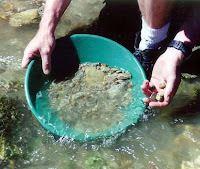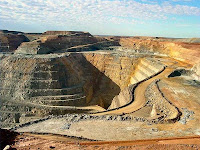In my last blog entry I talked about buying silver on Ebay, and over the past couple of days I've been looking through a lot of Ebay and Yahoo Auction listings. Despite online auctions presenting a unique opportunity to trade precious metals from peer to peer, there are dangers of fraud that you need to be aware, most notably fake coins and replicas being passed off as official coins. What got me looking into this issue was a listing about a 2002 1 kilogram Silver Panda coin. Immediately I thought "Wow, the Central Mint of China must have produced some large size proofs of the Silver Panda! I have to get one!" Then I clicked on the listing and had a look at the photos and desription. My instincts alerted me that something was wrong, and I didn't bid on the item. Something about the coin didn't seem right. Here's the photo of the "Silver Panda" on Ebay.
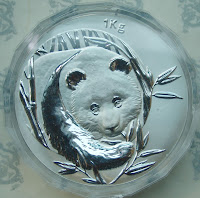

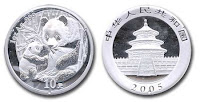 I went straight to Google images and searched for a 2002 1 kilogram Chinese Silver Panda, but couldn't find one. So I looked at some 1 oz silver pandas, and right away I noticed a few differences that confirmed by instinctive feeling. The 1 kg giant Silver Panda was not a Silver Panda at all, it was either a legal replica of a silver Panda and struck by a private mint, or an illegal fake. Either way I was highly suspicious that this coin was made of real silver, at least not pure silver. The obvious differences between the 1 kilogram item and a 1 oz Silver Eagle's design are the lack of a face value in Yuan, signifying that this is not legal tender, and the lack of the purity indication "1 oz Ag .999" (instead it simply reads "1 oz"). The implications of that are most certainly that this replica is not made of silver at all, but probably nickel or a cupronickel alloy. My guess is that because those markings are removed, this coin is a legal replica in China but that the vendors are fraudulently passes these off as real silver bullion coins when they are not.
I went straight to Google images and searched for a 2002 1 kilogram Chinese Silver Panda, but couldn't find one. So I looked at some 1 oz silver pandas, and right away I noticed a few differences that confirmed by instinctive feeling. The 1 kg giant Silver Panda was not a Silver Panda at all, it was either a legal replica of a silver Panda and struck by a private mint, or an illegal fake. Either way I was highly suspicious that this coin was made of real silver, at least not pure silver. The obvious differences between the 1 kilogram item and a 1 oz Silver Eagle's design are the lack of a face value in Yuan, signifying that this is not legal tender, and the lack of the purity indication "1 oz Ag .999" (instead it simply reads "1 oz"). The implications of that are most certainly that this replica is not made of silver at all, but probably nickel or a cupronickel alloy. My guess is that because those markings are removed, this coin is a legal replica in China but that the vendors are fraudulently passes these off as real silver bullion coins when they are not.
Yesterday I saw at least a dozen identical items listed on Ebay, all originating in Hong Kong or China, several having the exact same photos and description page but different user names. Today it seems that all of the listing have been removed as complaints come in and Ebay closes the offending accounts. After looking around the Ebay forums I discovered that there is a huge problem with counterfeit coins and misrepresentations coming out of China. There are items like the above misrepresented replica, but there are other items which are the same as real bullion coins in size and design but have either reduced precious metals content or no precious metals content.
How can you prevent falling for fake precious metals scams on Ebay? Well, the first step I would take is to avoid purchasing from anybody in China, or in any other country where I think that regulations are lax. But beyond that there are signs to watch out for. Many of the fake Chinese Panda coins and others have a very low starting bid, often less than $1 US. But they have exorbitant shipping costs, which the seller keeps for himself. In the case of the 1 kg Panda replica above, the starting price was $89 US, but free worldwide shipping was being offered. Would a legitimite individual vendor really offer free worldwide shipping on a 1 kilogram item? I really doubt it. Another sign was the vendor's sales page, which looked like a desperate attempt to seem like a professional page but totally missed the mark. And another key indicator was that the vendors often had 0 previous transactions or a small number of previous transactions. That's because they're constantly getting banned and signing up with new accounts.
In addition to intentional fraud, there must be a lot of sellers out there who unknowingly bought fake bullion and are now reselling it without bad intentions. I read on the Ebay forums that one man bought a lot of American Silver Eagles, exclusively from vendors with excellent feedback scores, yet still 10% of his coins turned out to be fake when he sold them to his local bullion shop. The way to avoid this is to determine whether your purchase is authentic upon receipt. You could always have the item appraised by taking it to a local vendor and acting like a potential seller. Another simple way could be to weigh the coin, since a 1 ounce silver coin should weigh 31.1034768 grams, or 1.097142857 ounces (remember that troy ounces and Avoirdupois Ounces used for weight are slightly different). Nickel and copper for example are lighter than silver, so a cupronickel fake Silver Eagle would weigh less than a real Silver Eagle, assuming they were both the same size. There are also acid test kits you can buy. You apply a drop of acid to the bullion, and depending on the resulting color you will know the purity of the precious metals content. These are widely available through online shopping, such as amazon.com. If your bullion does turn out to be fake or of a different quantity or purity than you were led to believe, then you should contact Ebay immediately to file a dispute. If you pay by Paypal it is supposed to be easier to dispute purchases and get your money back. Though in the case of fraudulent vendors who make one sale then vanish, I'm not sure you will get any money back.
I don't want to discourage you from using online auctions to increase the size of your gold and silver stack, but I hope you take precautions and don't let the
ticking auction clock prevent you from doing your due diligence when shopping.


 I went straight to Google images and searched for a 2002 1 kilogram Chinese Silver Panda, but couldn't find one. So I looked at some 1 oz silver pandas, and right away I noticed a few differences that confirmed by instinctive feeling. The 1 kg giant Silver Panda was not a Silver Panda at all, it was either a legal replica of a silver Panda and struck by a private mint, or an illegal fake. Either way I was highly suspicious that this coin was made of real silver, at least not pure silver. The obvious differences between the 1 kilogram item and a 1 oz Silver Eagle's design are the lack of a face value in Yuan, signifying that this is not legal tender, and the lack of the purity indication "1 oz Ag .999" (instead it simply reads "1 oz"). The implications of that are most certainly that this replica is not made of silver at all, but probably nickel or a cupronickel alloy. My guess is that because those markings are removed, this coin is a legal replica in China but that the vendors are fraudulently passes these off as real silver bullion coins when they are not.
I went straight to Google images and searched for a 2002 1 kilogram Chinese Silver Panda, but couldn't find one. So I looked at some 1 oz silver pandas, and right away I noticed a few differences that confirmed by instinctive feeling. The 1 kg giant Silver Panda was not a Silver Panda at all, it was either a legal replica of a silver Panda and struck by a private mint, or an illegal fake. Either way I was highly suspicious that this coin was made of real silver, at least not pure silver. The obvious differences between the 1 kilogram item and a 1 oz Silver Eagle's design are the lack of a face value in Yuan, signifying that this is not legal tender, and the lack of the purity indication "1 oz Ag .999" (instead it simply reads "1 oz"). The implications of that are most certainly that this replica is not made of silver at all, but probably nickel or a cupronickel alloy. My guess is that because those markings are removed, this coin is a legal replica in China but that the vendors are fraudulently passes these off as real silver bullion coins when they are not.Yesterday I saw at least a dozen identical items listed on Ebay, all originating in Hong Kong or China, several having the exact same photos and description page but different user names. Today it seems that all of the listing have been removed as complaints come in and Ebay closes the offending accounts. After looking around the Ebay forums I discovered that there is a huge problem with counterfeit coins and misrepresentations coming out of China. There are items like the above misrepresented replica, but there are other items which are the same as real bullion coins in size and design but have either reduced precious metals content or no precious metals content.
How can you prevent falling for fake precious metals scams on Ebay? Well, the first step I would take is to avoid purchasing from anybody in China, or in any other country where I think that regulations are lax. But beyond that there are signs to watch out for. Many of the fake Chinese Panda coins and others have a very low starting bid, often less than $1 US. But they have exorbitant shipping costs, which the seller keeps for himself. In the case of the 1 kg Panda replica above, the starting price was $89 US, but free worldwide shipping was being offered. Would a legitimite individual vendor really offer free worldwide shipping on a 1 kilogram item? I really doubt it. Another sign was the vendor's sales page, which looked like a desperate attempt to seem like a professional page but totally missed the mark. And another key indicator was that the vendors often had 0 previous transactions or a small number of previous transactions. That's because they're constantly getting banned and signing up with new accounts.
In addition to intentional fraud, there must be a lot of sellers out there who unknowingly bought fake bullion and are now reselling it without bad intentions. I read on the Ebay forums that one man bought a lot of American Silver Eagles, exclusively from vendors with excellent feedback scores, yet still 10% of his coins turned out to be fake when he sold them to his local bullion shop. The way to avoid this is to determine whether your purchase is authentic upon receipt. You could always have the item appraised by taking it to a local vendor and acting like a potential seller. Another simple way could be to weigh the coin, since a 1 ounce silver coin should weigh 31.1034768 grams, or 1.097142857 ounces (remember that troy ounces and Avoirdupois Ounces used for weight are slightly different). Nickel and copper for example are lighter than silver, so a cupronickel fake Silver Eagle would weigh less than a real Silver Eagle, assuming they were both the same size. There are also acid test kits you can buy. You apply a drop of acid to the bullion, and depending on the resulting color you will know the purity of the precious metals content. These are widely available through online shopping, such as amazon.com. If your bullion does turn out to be fake or of a different quantity or purity than you were led to believe, then you should contact Ebay immediately to file a dispute. If you pay by Paypal it is supposed to be easier to dispute purchases and get your money back. Though in the case of fraudulent vendors who make one sale then vanish, I'm not sure you will get any money back.
I don't want to discourage you from using online auctions to increase the size of your gold and silver stack, but I hope you take precautions and don't let the
ticking auction clock prevent you from doing your due diligence when shopping.


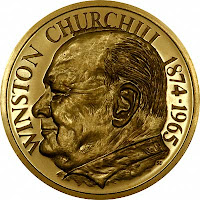
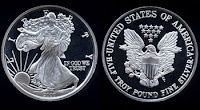






 In the days of the Gold Rush pyrites and gold were often confused, resulting in much confusion and disappointment. This sometimes leads to the worry in this day and age that fool's gold and real gold are difficult to distinguish. But fear not, because through the above testing methods, fools gold identification is relatively simple.
In the days of the Gold Rush pyrites and gold were often confused, resulting in much confusion and disappointment. This sometimes leads to the worry in this day and age that fool's gold and real gold are difficult to distinguish. But fear not, because through the above testing methods, fools gold identification is relatively simple.



 currently industry and dentistry, totalling 11% of of total demand.
currently industry and dentistry, totalling 11% of of total demand. Gold has many non-dental medical uses as well. Precision lasers used in medicine have gold coating on their inside surfaces to control the beam's focus. Gold vapor lasers are being used to isolate and destroy cancer cells without harming neighbouring cells. And military medics carry gold lasers that can cauterize wounds in the field, potentially saving the lives of wounded soldiers. Doctors also inject tiny gold pellets into the prostate to fight prostate cancer. Another example is the use of gold salts that have long been used to treat rheumatoid arthritis.
Gold has many non-dental medical uses as well. Precision lasers used in medicine have gold coating on their inside surfaces to control the beam's focus. Gold vapor lasers are being used to isolate and destroy cancer cells without harming neighbouring cells. And military medics carry gold lasers that can cauterize wounds in the field, potentially saving the lives of wounded soldiers. Doctors also inject tiny gold pellets into the prostate to fight prostate cancer. Another example is the use of gold salts that have long been used to treat rheumatoid arthritis.
